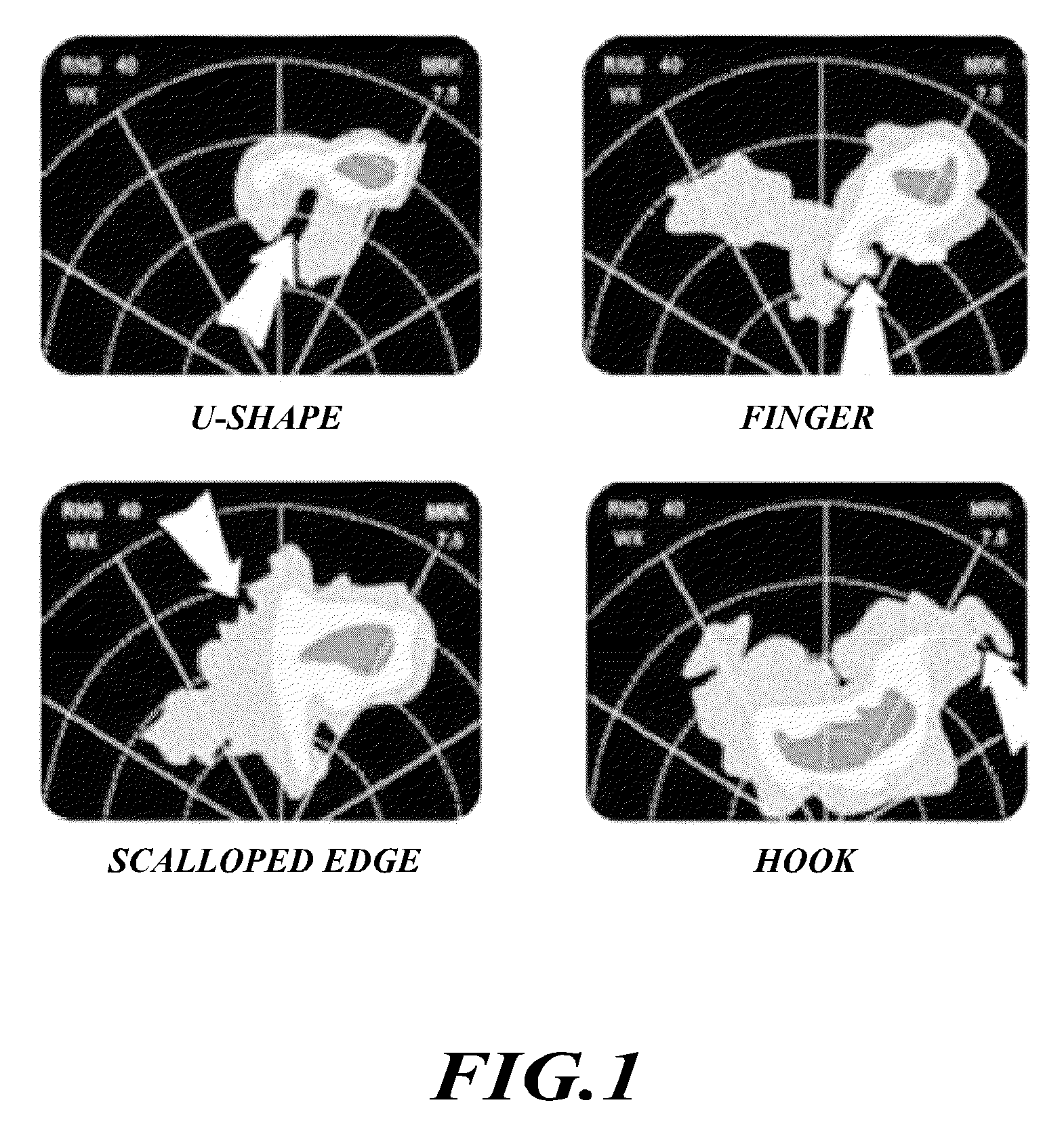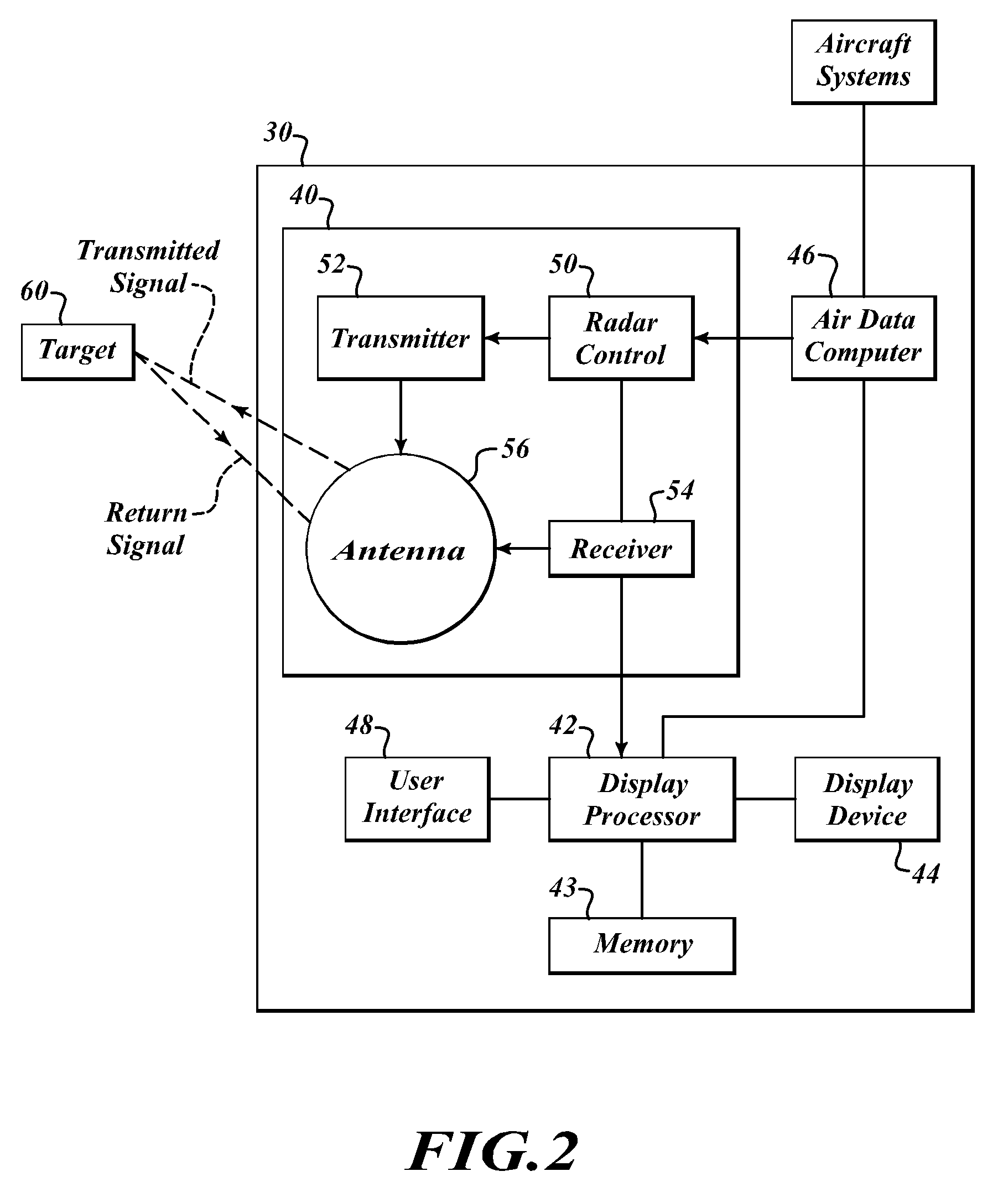Enhanced alerting of characteristic weather hazards
- Summary
- Abstract
- Description
- Claims
- Application Information
AI Technical Summary
Problems solved by technology
Method used
Image
Examples
Embodiment Construction
[0019]Embodiments of the invention employ processing of 3-D radar reflectivity data and data-pattern recognition techniques to detect and identify hazardous weather conditions on the basis of volumetric radar data. Previous approaches, such as that described in U.S. Pat. No. 6,650,275, have focused on processing of radar image data in two dimensions. In an embodiment, reflected data is not image processed prior to classifying the nature and / or severity of a weather system.
[0020]FIG. 2 illustrates an example of a suitable operating environment in which the invention may be implemented. The operating environment is only one example of a suitable operating environment and is not intended to suggest any limitation as to the scope of use or functionality of the invention. The operating environment may include or be a component of a three-dimensional buffer processing system, such as the RDR-4000 weather radar system manufactured by Honeywell®, including its volumetric buffer technology. ...
PUM
 Login to View More
Login to View More Abstract
Description
Claims
Application Information
 Login to View More
Login to View More - R&D
- Intellectual Property
- Life Sciences
- Materials
- Tech Scout
- Unparalleled Data Quality
- Higher Quality Content
- 60% Fewer Hallucinations
Browse by: Latest US Patents, China's latest patents, Technical Efficacy Thesaurus, Application Domain, Technology Topic, Popular Technical Reports.
© 2025 PatSnap. All rights reserved.Legal|Privacy policy|Modern Slavery Act Transparency Statement|Sitemap|About US| Contact US: help@patsnap.com



